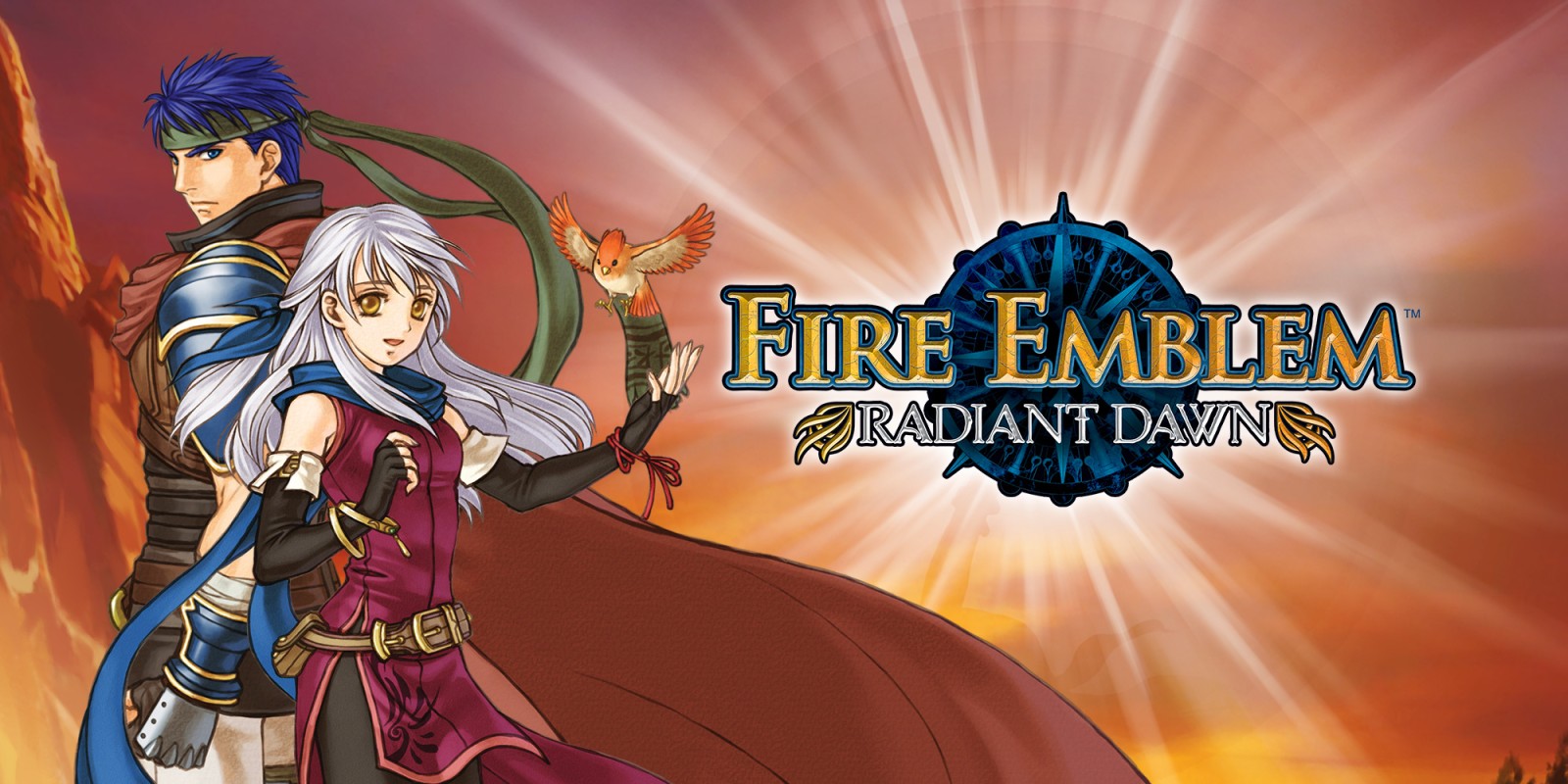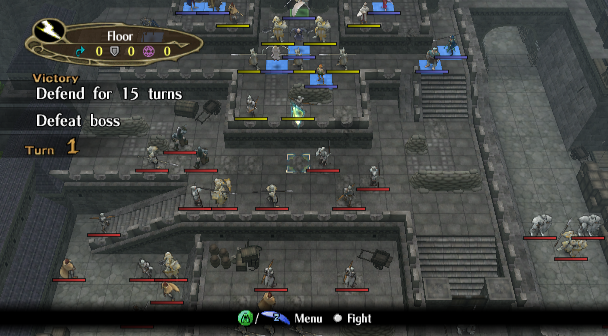
Introduction
Fire Emblem Radiant Dawn is a tactical role playing game developed by Intelligent Systems, released on the Wii in 2007. It is a direct sequel to the events of the previous entry in the Fire Emblem series.
Playthrough on YouTube: https://www.youtube.com/watch?v=JULnq5GVExc&ab_channel=ShionneImeris
The Elemental Tetrad
Story:
The story of Fire Emblem Radiant Dawn follows the structure and stylings of a medieval fantasy epic, letting the player experience the events of the game from three different perspectives, Micaiah, the leader of a band of resistance fighters, Elincia, a princess of the nation Crimea and Ike, the leader of a band of mercenaries.
What sets this game apart from other role playing games is the level of time and effort spent in establishing the world that the story is set in, which gives players a reason to invest in the characters and the plot emotionally. The game stars a roster of 70+ playable characters, all from distinct personalities and backgrounds that make the world feel fleshed out and lived in, with differing cultures and perspectives on the plot that generate believable tension and conflict that drives the plot forward. The large roster of characters also provides enough diversity of characters to ensure that there would be at least a few characters that the player would gravitate towards.
Furthermore, distinct from other tactical role playing games is the concept of permadeath, where characters that fall on the battlefield are considered “dead” in the story and can never be used again. Paired alongside good writing and heavy investment in the character stories create ludonarrative cohesion between the player’s attachment to these characters and the mechanical tension in keeping everyone alive in combat to witness those characters’ stories progress.
Aesthetics:
Character illustrations are done by artist Senri Kita, whose vibrant yet mature style and earthly tones makes the game beautiful to look at while maintaining the “serious” tone of a fantasy epic. This is contrasted with other JRPGs such as Final Fantasy or Xenoblade whose character design relies on a more heightened fantastical aesthetic to reflect its less “serious” and more whimsical tone.

Mechanics:
The main gameplay loop of Radiant Dawn involves progressing through a series of grid-based maps in which your army and the enemy armies do combat on. Combat is turn based where the player and the AI move their armies separately and one at a time.
There is a layer of strategy introduced by the weapon triangle, which is a rock-paper-scissors system that gives combat advantages/disadvantages based on the type of weapons they wield. This poses a teambuilding challenge for the player where they need to consider the characters in their army and deploy the most advantageous lineup to do well on that particular map.
Furthermore, maps offer different victory objectives as well. The most common objective is to rout all enemies, but variety in gameplay experience is offered in different objective such as defending the objective for X turns, escaping a map with all units, etc. Those different objectives also adds to the ludonarrative cohesion, when the game wants the player to feel in control, the maps are generally rout maps, when the game wants the player be on the backfoot, the maps generally change to escape/defend maps to enhance player feelings of helplessness/vulnerability.

Technology:
Fire Emblem Radiant Dawn was released on the Nintendo Wii unlike its GameCube predecessor as its release schedule aligned with the release of the Wii. However, this is one of the aspects in which this game suffers as the Wii was most famous for its motion controls, which this game utilised none of, leading to a somewhat awkward and clunky interaction between player and console, as there would have been some expectation of interacting and manipulating the characters with motion controls.
Lenses
The Lens of Problem Solving (#8):
The main gameplay loop of the game presents the players with a series of maps that can be “solved” or beaten in different ways depending on the player’s problem solving skills and preferences, such as the way they build their army, the characters they choose to deploy and the types of playstyles they employ (fast or turtling).
Certain maps have additional objectives that pose an additional layer of challenge on top of the main objective, for example clearing the map’s boss without killing too many of their soldiers who were innocent soldiers forced to comply. This forces players to constantly rethink their strategies, strategies that may have worked in the previous maps may not apply to the current one.
The Lens of Skill (#34):
Since Fire Emblem is a tactical RPG, skill is an important aspect that the game incorporates. As mentioned previously, the game requires players to have good “map awareness”, team building, positioning, and occasionally mathematics to calculate damage. Since the game is turn based instead of action based, outcomes of individual combat encounters are determined. in other words, there’s no amount of player reflexes or instinct that can influence the outcome of a battle like in games such as Dark Souls. This incentivises the player to act deliberately instead of instinctively, which adds to the experience of being a “tactician”, rather than a soldier in the midst of the battle itself, which coheres with the narrative of the 3 protagonists being the respective leaders and tacticians of their armies.
The Lens of Chance (#36):
However, the game adds variety to its gameplay experience by incorporating controlled randomness into its encounters. Attacks have a chance to miss, or to critical hit depending on certain stats of characters. While this could make certain characters more or less consistent, these controlled bouts of randomness can give rise to positive gameplay experiences, such as characters getting a clutch critical hit on a certain boss or important characters dodging an otherwise lethal blow.
There is an interesting interplay between skill and chance in this game, as players do require skills to strategise how to complete each map, but those strategies are necessarily peppered with bouts of randomness that might throw a wrench in the player’s plans, in which they would need to restrategise and the loop continues. This gives the player a certain level of control while adding enough randomness to not make the game feel like a “solved” game. Hence, there are no walkthroughs online that can tell a player what are the exact steps to take to finish a map.
The Lens of Story (#78):
Lastly, the lens of story is arguably the most important aspect of this game as compelling writing and strong characterisation forms the backbone of player experience, what drives them to succeed mechanically is motivated by the player’s investment in seeing the plot and the characters move forward.
One interesting way the story is supported by gameplay is that the three armies eventually come into conflict at one point in the story. This creates an interesting dynamic where the player’s time and investment in training up one army would later pose as a problem to the same player as they would have to fight their trained characters as another army. Furthermore, certain characters on opposite sides of the war can defect to another army which also gives players an interesting choice of sending a good unit to a weaker army at the cost of story interactions.
Conclusion
Fire Emblem Radiant Dawn is one of my favourite games of all time and I believe it primarily stems from its unique way of incorporating story and gameplay, giving rise to certain gameplay experiences that the developers may not have necessarily intended. If you like story driven games with fun and challenging mechanics, I recommend you to give this game a try on an emulator if possible.
Sources
- https://fireemblem.fandom.com/wiki/Fire_Emblem:_Radiant_Dawn
- https://kantopia.wordpress.com/2016/12/21/fe-rd-senri-kita-comments-book-cover-illustrations-248-249-translations/
- https://yourfellowgeek.wordpress.com/2019/02/12/fire-emblem-radiant-dawn-playthrough-05/
- https://web.archive.org/web/20080829204949/http://uk.gamespot.com/wii/rpg/fireemblem/review.html
